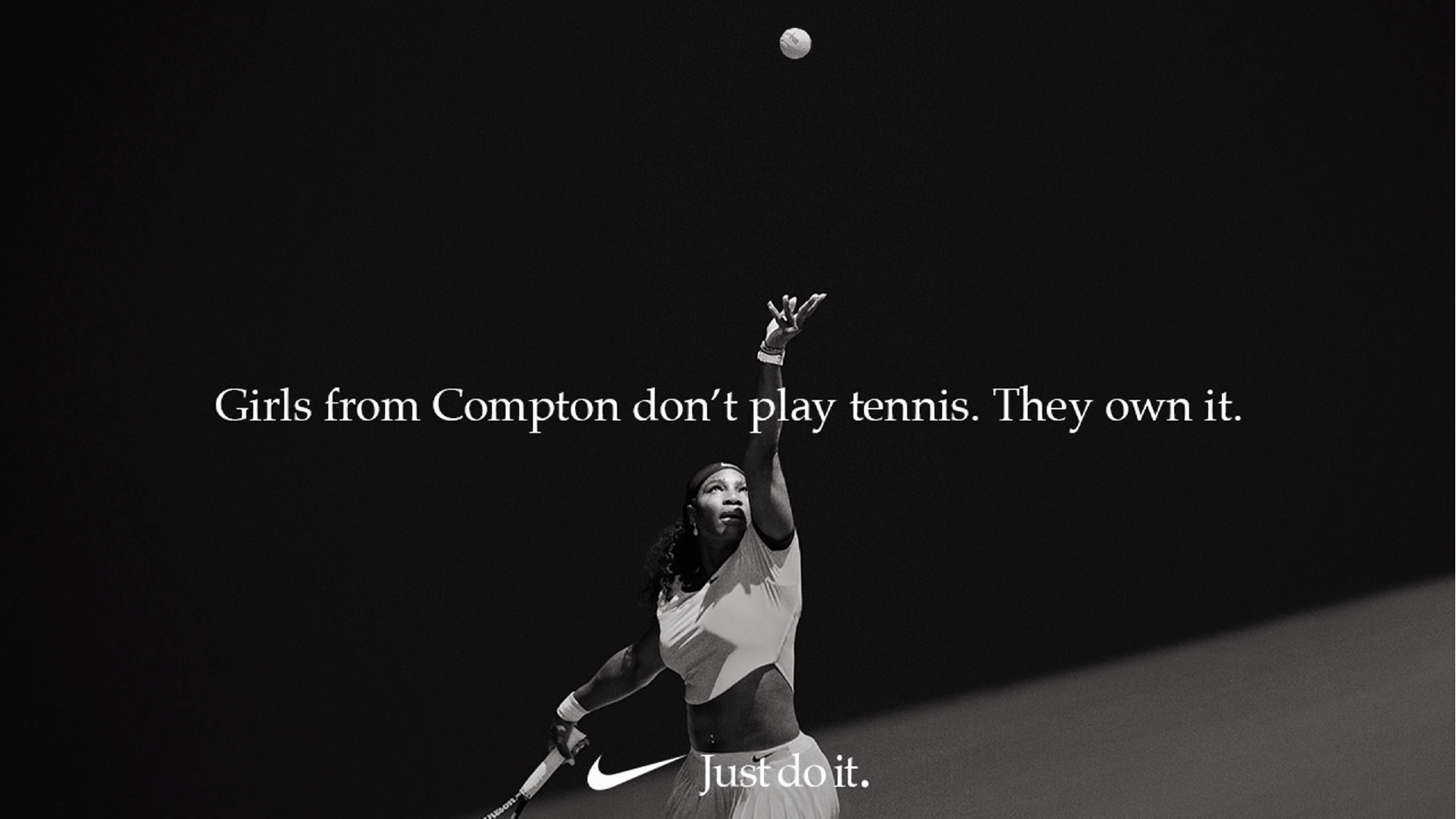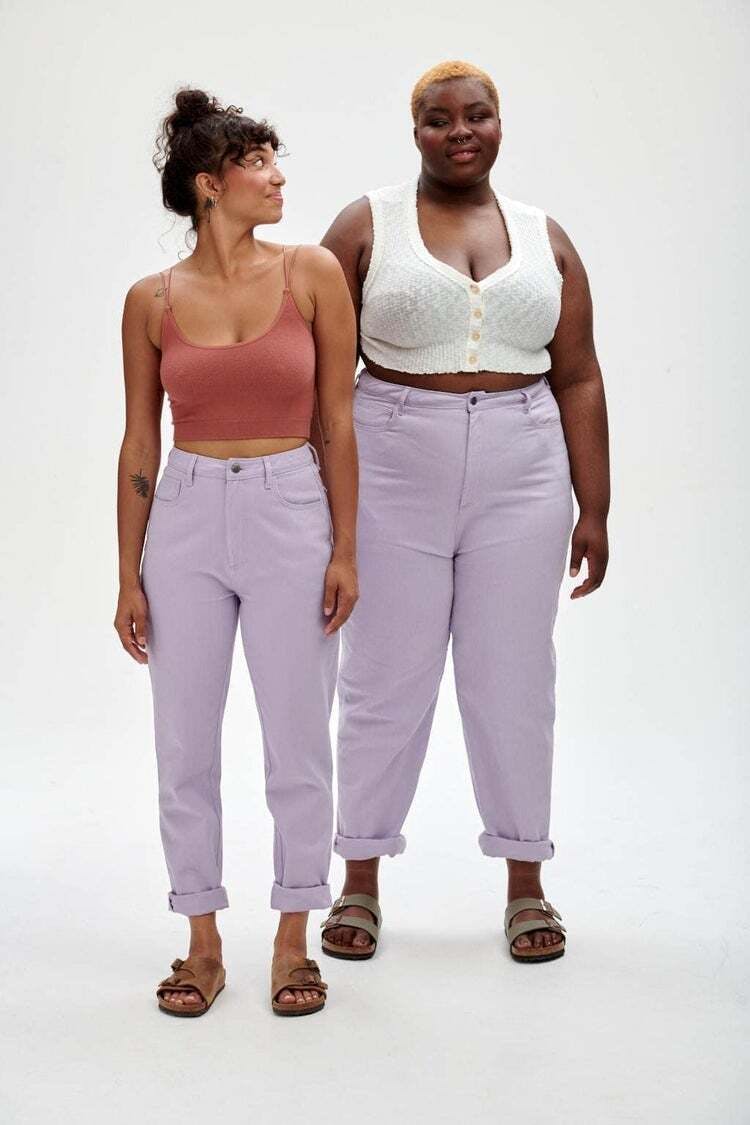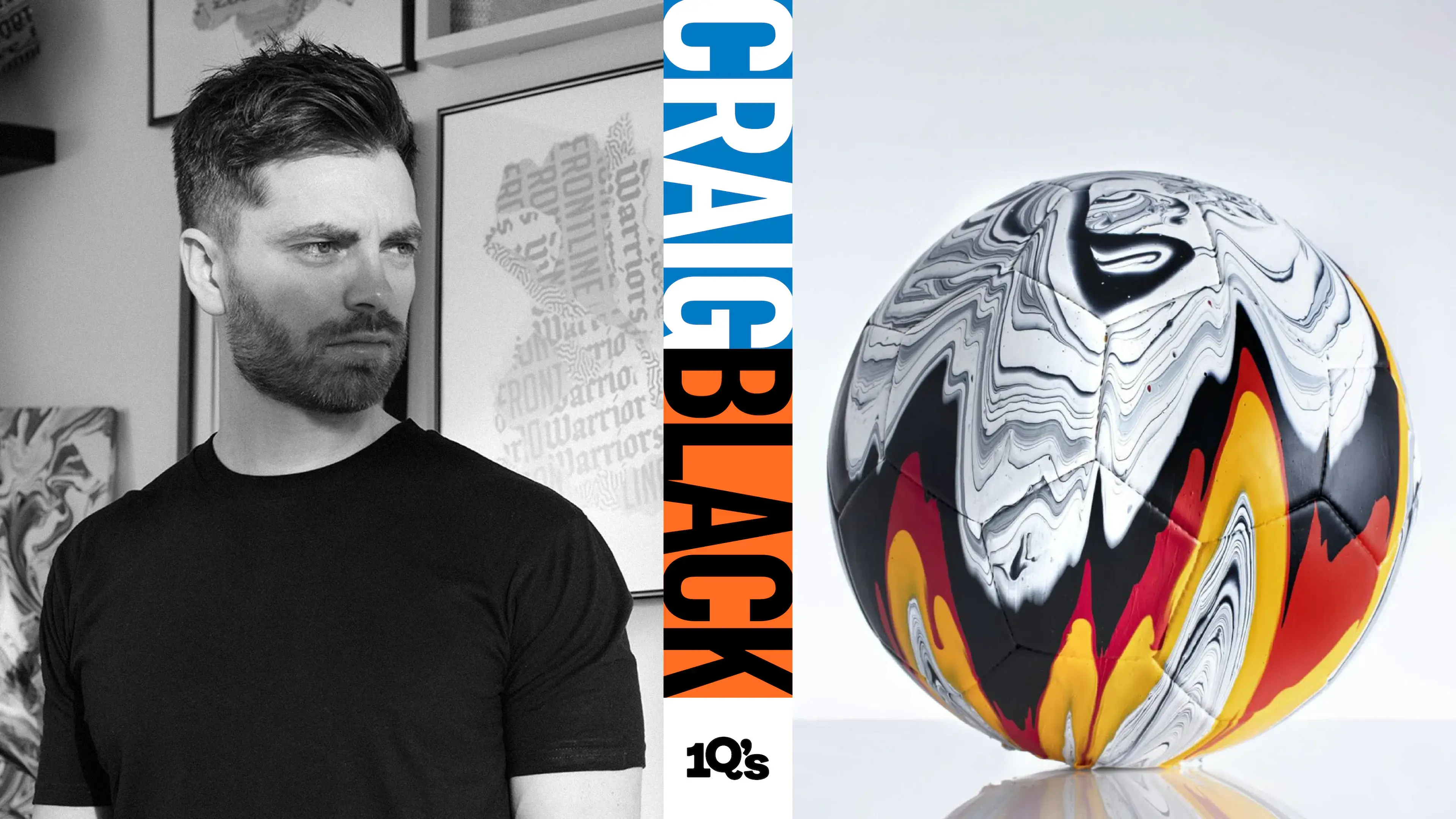

Gen Z or not Gen Z
How can we retrain our brains to design for this generation?
Written by Craig Berry, Designer & Writer at Nomad.
‘Can we make it pop more???’ ‘How can we make it more dynamic???’ ‘MAKE THE LOGO BIGGER!!!’
These kinds of questions and comments will (almost definitely) come up when working on most design jobs, but now there’s a new challenger: ‘does this appeal to Gen Z?’ Usually asked by someone who, in having to ask, doesn’t really understand who (or what) Gen Z really is...
It’s impossible to ignore Gen Z (or to give it its full name, Generation Z*) in the world today because they make up about 30% of people globally and more than 40% of global spending power (and rising). They are the largest generation but you also can‘t ignore them because pretty much every brand you can think of or care about is trying their best to market themselves to them, right now.
*Just to clarify, in case you don‘t know, Gen Z is the name given to the generation of people in the world today who are widely accepted as being born between 1995–2012; give or take one or two years each side depending on who you ask.
They are defined as, ‘the generation reaching adulthood in the second decade of the 21st century’ – Oxford Dictionaries, ‘the group of people who were born between the late 1990s and the early 2010s’ – Oxford Learner‘s Dictionaries and ‘the generation of people born in the late 1990s and early 2000s’ – Merriam-Webster.
Like with any form of marketing from brands, some brands just get it.
Instagram’s recent campaign of ‘We Make Today’ taps into the Gen Z desire and urge for self-expression by celebrating its creator's creativity and letting them tell their stories, themselves. Nike isn’t afraid to take a stance on a ‘touchy subject’ and they’re willing to sacrifice popularity and company value to stand by it (if only initially); sitting on the fence or being neutral will not win over Gen Z. Nike also have an inherent nature of not following the latest trends but creating trends, whether that’s visually or socially.
While some brands have only recently started fighting injustice and stating their social cause interests, Ben & Jerry’s has been doing it since 1985 when they created a foundation to fund community-orientated projects as well as actively advocating the protection of the environment. They even created a flavour that celebrates ‘safety and liberation’ called ‘Change is Brewing’ which through publicity aims to transform the approach to public safety. And despite the clout that eBay has, Gen Z opts to sell their old clothes on Depop for the community aspect; it’s a platform filled with fellow Gen Z people, eager and keen to sell and share their passion for fashion - it’s a place for self-expression, visible through its branding.
‘We didn’t build this platform necessarily for Gen Z. We basically have a set of values that happen to resonate quite well with Gen Z.’
Maria Raga – CEO of Depop.



Other brands, just don’t get it.
Gatekeeping, staying silent, jumping on the bandwagon, trying to be ‘down with the kids’ (please don’t), promoting unrealistic images, sharing out-of-date-within-one-day memes, replying with over-the-top sass on Twitter and generally creating things that make you cringe so hard, your teeth hurt.
There are many brands doing one, two, three or more of these on a daily basis, too many to mention.
Something that comes up regularly when looking at successful Gen Z campaigns and marketing is involving Gen Z people in the creative process, but what do you do if you’re running a design studio and a client has briefed you and your team on their latest Gen Z campaign? The average age of a design director in the USA is 37 years old. It’s 40 for a creative director and the UK probably has a similar figure. Because of this, it means the people who are often making the decisions may not be necessarily qualified to speak to (or for) this audience. Also, this generation who often steer and direct design projects; the beloved Millennials as of now, have become successful in their careers by designing for other Millennials or even older generations and thus the tricks that work on these generations do not apply to Gen Z.
This means that we, as collective designers, creatives and studios, have to re-train our brains to design for Gen Z or face the consequences. It's not unrealistic to say that within a few years, there might be no jobs left to do as Gen Z will be doing them all themselves when they're old enough to run their own design studios.
How though? Often as creatives, we have to ‘wear different hats’ and ‘put ourselves in someone else’s shoes’ to think in different ways and think what that person wants; it’s part of the job and it’s how studios can create amazing work for clients in an industry that they might not have any interest in. Here are some conversation starters that might help.
Having a flexible, adaptive and reactive visual style.
It’s no secret that Gen Z trends and interests change at a pace that is almost possible to keep up with or predict. That’s why there are so many ‘how to… Gen Z’ articles available online at any given time as each person is reacting to each trend at that time – not every brand is a Nike and can create trends, some have to follow and that’s fine.
What was relevant today can be dead tomorrow so while keeping up to date with what’s going on in the world is not unique to appealing to Gen Z, having this at a rapid speed is. As well as being dialled in on all the nuances and niches that exist in the Gen Z world.
From a design perspective, one way to work with this speed of change is to develop a branding solution that is highly flexible and adaptive so as to be able to react to these changes as and when necessary. That could be by having a very minimal set of elements that can act as a canvas, allowing content to be plugged in and not totally changing the brand. A good example of this is WeTransfer, whereby the brand exists only as a logo on a website; an incredibly basic website that acts as a canvas, with ‘wallpapers’ to allow artists, designers, creatives (and brands to advertise) etc. to work into; every time you load the website it can be a new experience and it can react to what is relevant at that time; all the while, it’s logo simply sits top right. They also act as a platform to allow communities to advocate their message, or to share the work of upcoming creatives on their website, one that sees a lot of traffic daily.

‘To most people, WeTransfer is nearly invisible. We’re just the transfer box. The background belongs to someone else, but it accounts for 95% of what people recognize as the brand.’
Damian Bradfield – President and CMO of WeTransfer
It’s an interesting conversation to explore which brand element gives the most attribution back to the brand, is it the logo? Is it a particular colour? Is it the font choice? Or is it the tone of voice? With every brand in the world, you could distill it down to one of these and explore; what if X red brand used a new font, would you still recognise it? Probably, so think about the ability to swap, change, adjust and adapt. But do it quickly.
Authenticity, inclusivity and diversity as second nature.
A big part of a successful Gen Z campaign is something that feels genuine and authentic - which admittedly, is difficult for big organisations and brands to do. A way to communicate this effectively is through hiring and casting diverse, inclusive and multicultural people. This isn’t anything new, or exclusive to Gen Z. campaigns but it is the kind of thing that Gen Z expect (and demands) of brands nowadays.
With some campaigns, it’s easy to see the act of ticking boxes for certain communities in a way that does feel disingenuous. It’s a bigger picture but this idea of ticking boxes and having to make a specific effort to be diverse and inclusive should come as second nature to us as creatives and brands when putting out content. It’s something that the wider creative industry needs to address but something that we as designers can help to push.


Clothing brands are getting more and more on board with this idea recently, it’s now more common to see a wide range of body sizes, ethnicities and ages; allowing the consumer to see how these items look on someone that best represents their own body type as opposed to having to guess how it might look.
Lucy & Yak are a great example of this but also appeal to Gen Z as a fashion brand for their approach to sustainability and recycling and for sharing their transparency about manufacturing and suppliers, they’re happy for people to know what is going on with their brand when others would hide this information away.
It’s worth noting that Lucy & Yak hasn’t always done this and were called out for it in late 2020 for not practicing what they preached regarding size inclusivity but owned up and held themselves accountable through a statement, making systemic changes in their business.
Words, words and more words.
What you say is important. It’s time to get off the fence, stake your claim, plant your flag, take your stand and shout it from the rooftops. Having a strong message is something that Gen Z wants to see, as companies and corporations DO have a role to play in improving our society. As design studios, we may often get the chance to work on a brand’s tone of voice when creating their new brand and this is an opportunity to choose a message and choose how to say it – choose wisely though; get it wrong and you’d better have that Instagram apology post ready.
But what it says is not design, not really; the words are the words. But, words online come in fonts (hopefully this isn’t new news) which are something that designers do choose for brands, for various reasons and can be used to help a brand communicate that important message properly. Something to think about when choosing a font is the idea of ‘shareability’, this can be interpreted in two ways:
Firstly, anything that a brand puts out online is going to be shared around at lightning speed; so having a font that is as legible as possible on screens of all sizes and formats. Having and legible font is an easy win for a brand to appeal to a wide Gen Z audience; sure some Gen Z people are loud, quirky and extroverted in their appearance and attitude, but that’s not everyone, in fact, it’s a small minority with UK Gen Z three times more likely to describe themselves as introverts than extroverts, so maybe, don’t go for them.
Secondly, and possibly contradictory, is having something that is shareable because it does stand out because it is different and grabs your attention. I believe the answer is finding a balance between the two and using Nike’s recent ‘Play New’ campaign as a great example. The powerful and expressive typography for Play New is distinctive and what people see right away. Paired with an extremely legible and strong sans-serif that backs it up with an important, empowering statement or message.

Hiring Gen Z talent.
In that same point about being reactive and aware of what is going on in the Gen Z world, you need Gen Z people to be there, doing that. Time after time, we see brands being called out online for not involving the people that they are doing something for or about. ‘Not about me, without me’ is something that comes up when brands go for a specific group of people or a culture, but it can also apply to Gen Z. No matter how many articles they read, how many hours they spend scrolling on Tik-Tok or Instagram or how cool they think they are, people who aren’t Gen Z will not fully get Gen Z.
The not-so-secret secret to getting Gen Z is to hire Gen Z talent; having a part of your company who ‘have their finger on the pulse’ and can bring to the table what is going on and what’s popular right now. They can also be a sense check to other people’s ideas, to ensure things that people might think are popular now, still are.
As I mentioned earlier, the stark truth is that as Gen Z becomes older, in a few years they will be the ones starting creative studios at a young age. This generation is not afraid to do things against the general rulebook i.e. working their way through the industry for 20 years; they’re not afraid and they have the tools, technology and mindset to do it themselves. So if places don’t integrate Gen Z into their companies and businesses soon, they won’t have any choice later on.
So, let’s conclude and summarise...
Firstly, it’s important to say that everything in this piece should be taken with a pinch of salt - this is not the definitive answer but a series of thoughts and prompts, use each one as a starting point and conversation piece, they’re something to take and think about.
The idea of re-training our brains to design for Gen Z is not something that can be quantified and written down into a checklist, otherwise, everything everyone would make would look very similar. It takes a series of actions to re-train our brains and I genuinely believe that it has to come from Gen Z themselves; instead of trying to predict what they want; let’s work with them and ask them – they will be the ones that will help older generations re-train their brains and give them a new hat to wear when designing for (and with) Gen Z.

